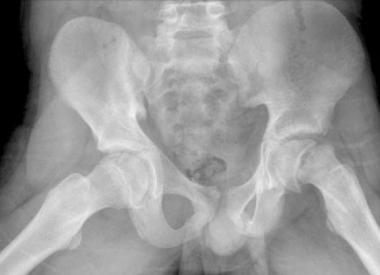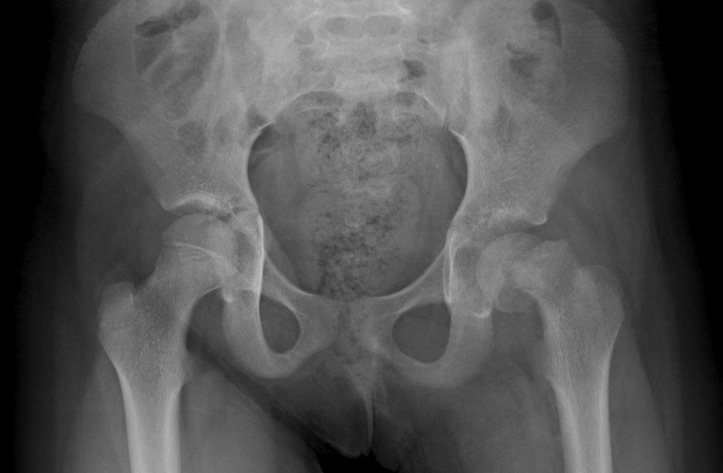OVERVIEW
This page is dedicated to organizing various examples of standardized exam questions whose answer is slipped capital femoral epiphysis. While this may seem a odd practice, it is useful to see multiple examples of how slipped capital femoral epiphysis will be characterized on standardized exams (namely the boards and the shelf exams). This page is not meant to be used as a tradition question bank (as all of the answers will be the same), however seeing the classic “test” characterization for a disease is quite valuable.
QUESTION EXAMPLES
Question # 1
A 13 year old boy is brought to the clinic became he has been experiencing left groin pain, knee pain, and limping. He explains that he has had these symptoms for the past 10 days. He is in the 95th percentile for weight and in the 65th percentile for height. The patient is afebrile, and all vital signs are in reference range. A physical exam shows that the range of motion in the left knee is normal, however the hip movements on this side are restricted. The patient’s left foot also points outward and there is external rotation of the left thigh with flexion of the hip. What is the likely diagnosis in this patient?
Question # 2
A 14 year old boy is brought to the clinic because he has been limping for the past day. He has been experiencing mild left hip pain for the past month, however after he fell off his skateboard today his mother noticed his limp and immediately brought him into the clinic. The patient’s BMI is 33 kg/m². When walking into the room the physician notices that he is favoring his right leg, and when he sits down his left leg is rotate externally. Upon physical examination there is decreased rang elf motion and pain with the internal rotation of his left hip. There is no leg limb length discrepancy. X-Rays of the hips are obtained, and one is shown below.

What is the likely diagnosis in this patient?
Question # 3
A 14 year old boy has increasingly severe left thigh and knee pain for the past few days. He also has been walking with a limp. Both he and his mother deny any past history of trauma. The patient’s vitals are within normal limits and his BMI is 21 kg/m². A physical exam reveals that passive motion of the hip elicits pain. An X-ray of the hips is shown below.

What is the likely diagnosis?
Question # 4
An otherwise healthy 13 year old boy is brought to the clinic because of a 2 week history of severe pain in his right knee. He also has been limping as a result of the pain. The patient plays in a middle school football team. He is in the 45th percentile for height and is in the 95th percentile for weight. His vital signs are within normal limits. Abduction of the right hip is slightly decreased and there is mild tenderness of the right hip. The left hip is unremarkable. The patient walks with a slight limp and is unable to bear full weight on his right leg. What might the patient’s diagnosis be?
Question # 5
A 15 year old boy complains of pain in the groin and is limping. He sits in the office with the foot on the left side rotated towards the other foot. Physical examination is normal for the left knee, but shows limited hip motion. As the hip is flexed, the leg goes into external rotation and it can not be rotated internally on the left side.
Question # 6
A 12 yea told boy complains of pain in his left knee. He has been experiencing this for the past few weeks. Earlier this week his mother started to notice that he was limping. His vitals are within normal limits. A physical exam reveals an obese boy that is not in any distress or pain. His left leg is turned inward, and his knee and toes point toward his right leg. His affected knee is unremarkable, without any swelling or effusion. There is limited range of motion at the left hip. As the hip is flexed, the leg externally rotates and locks in place. What is the likely diagnosis?
Page Updated: 11.23.2016